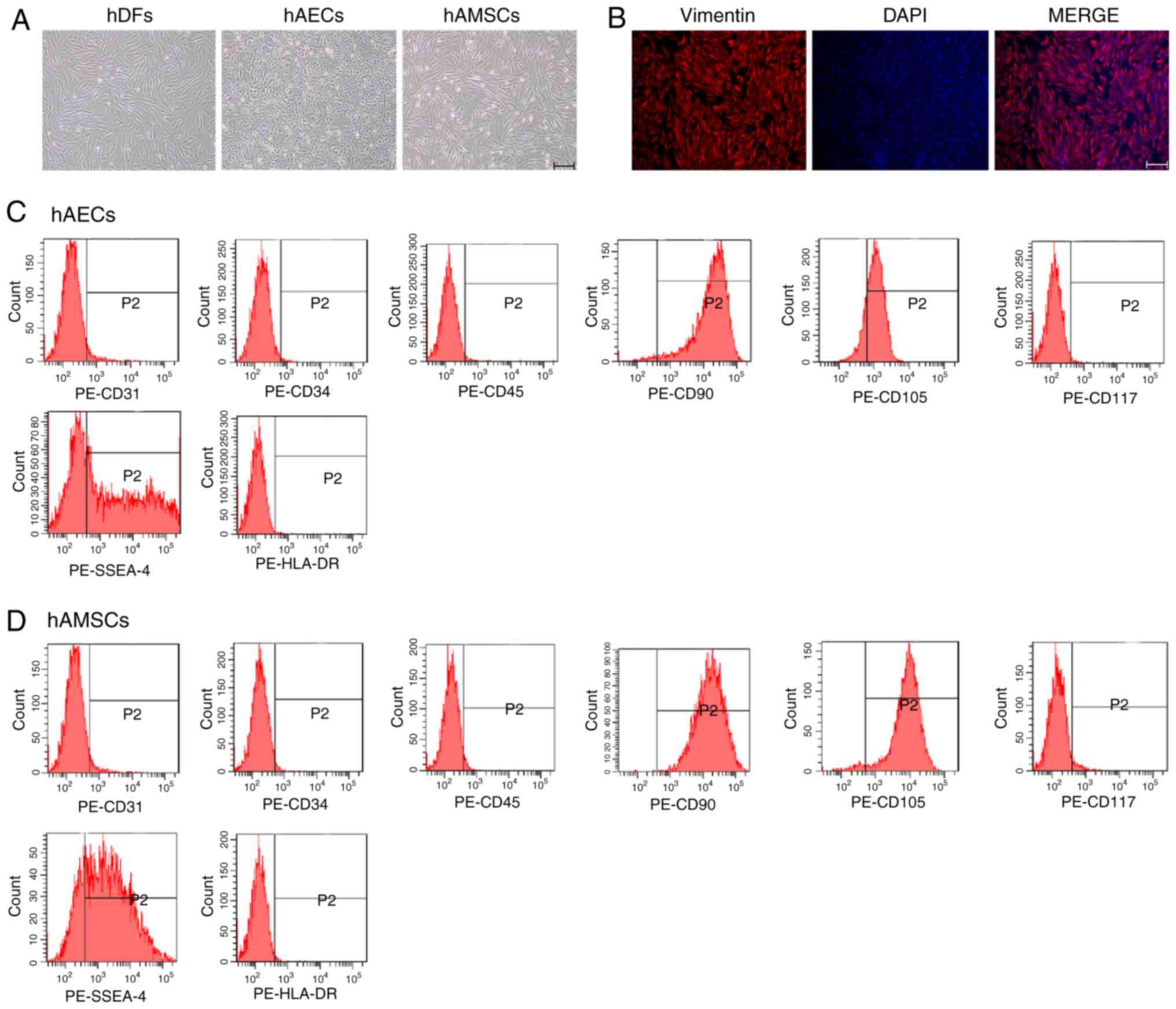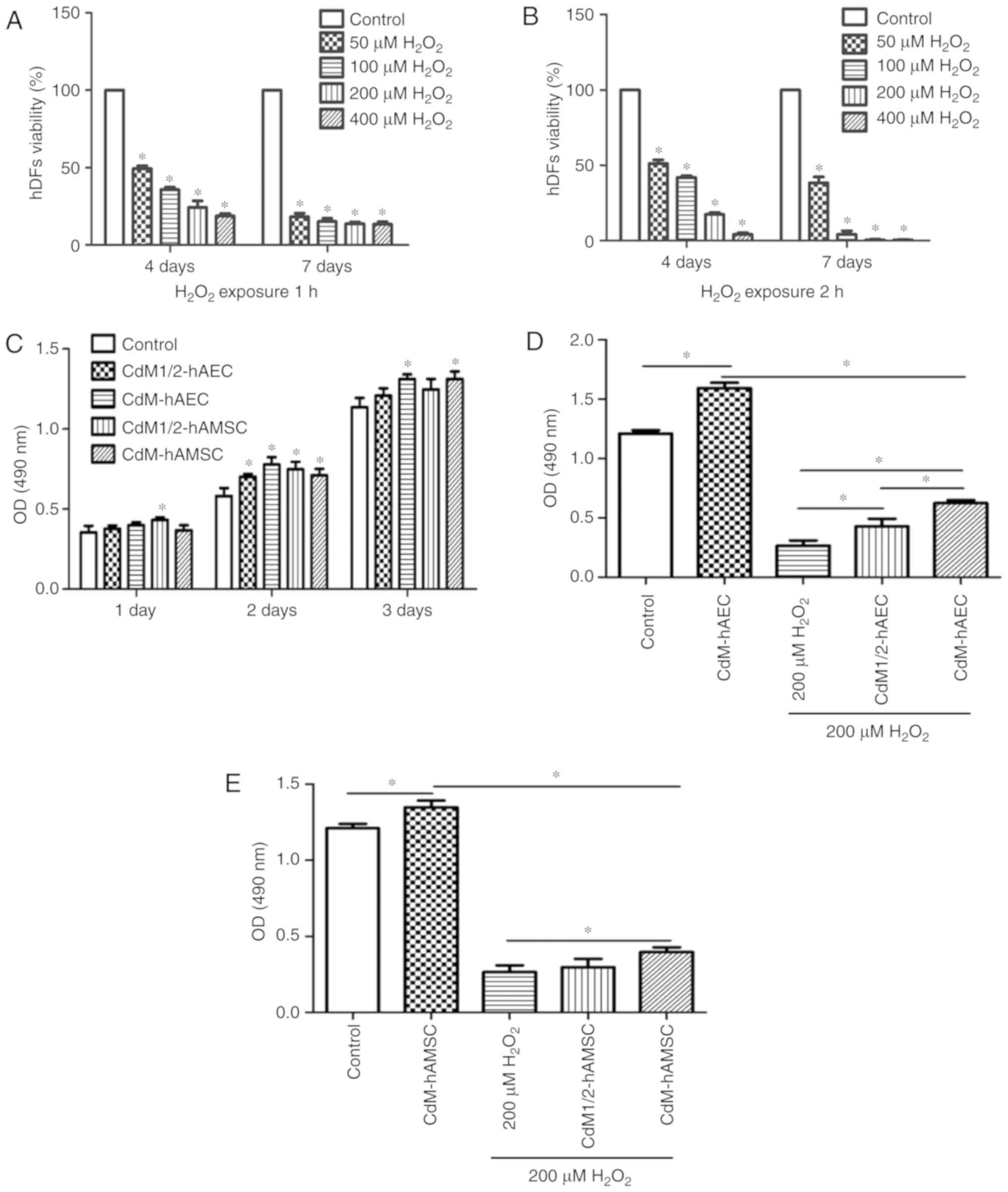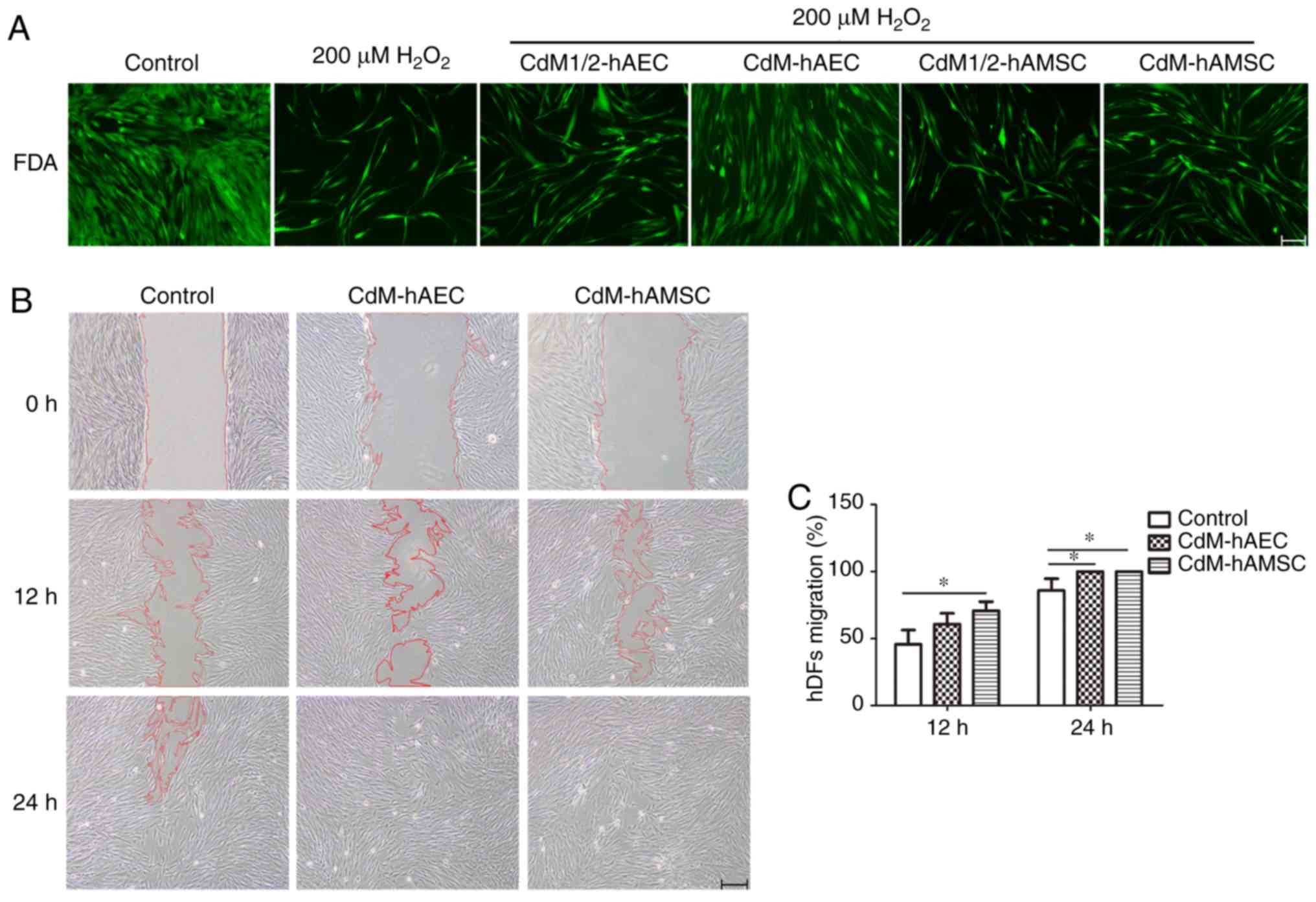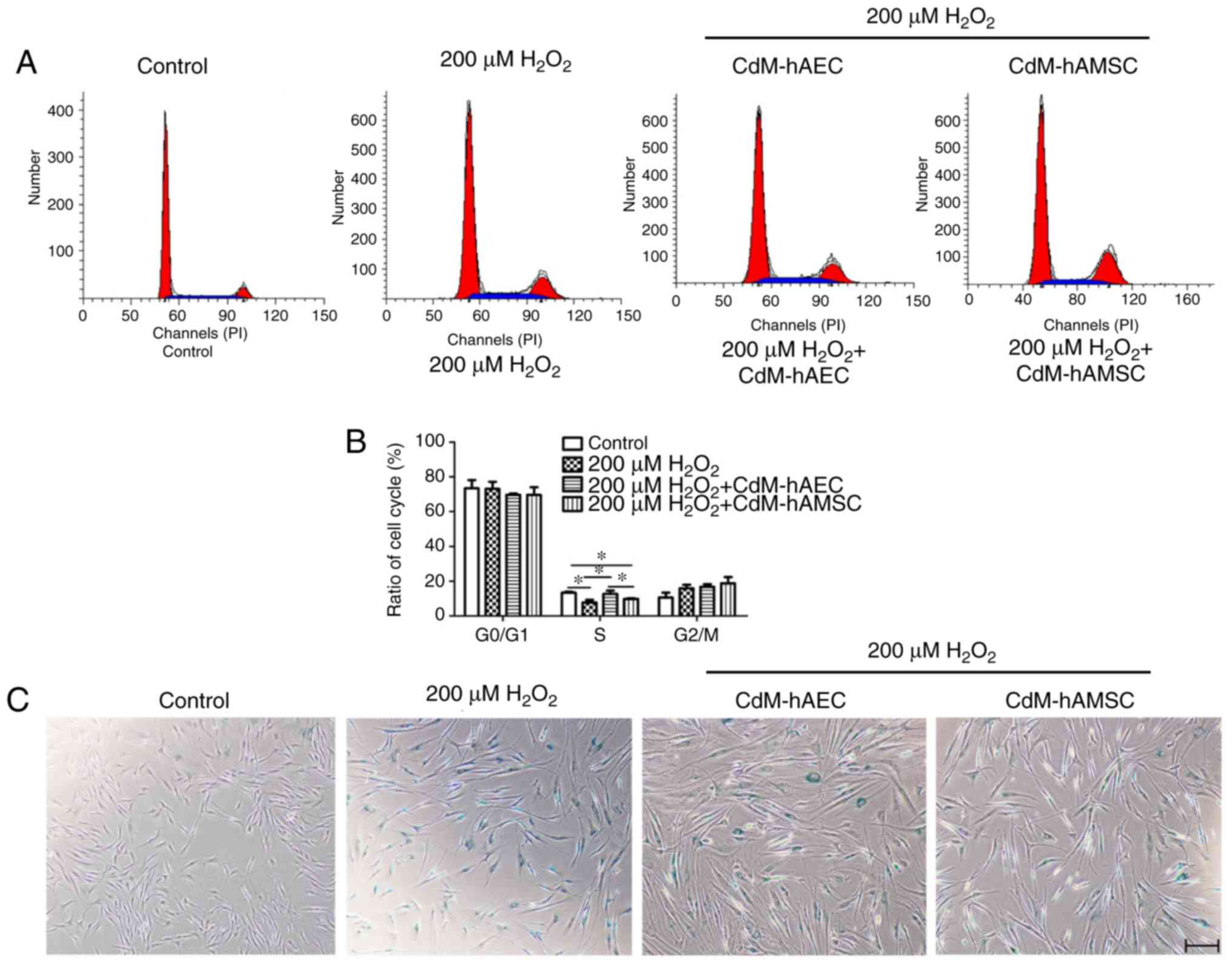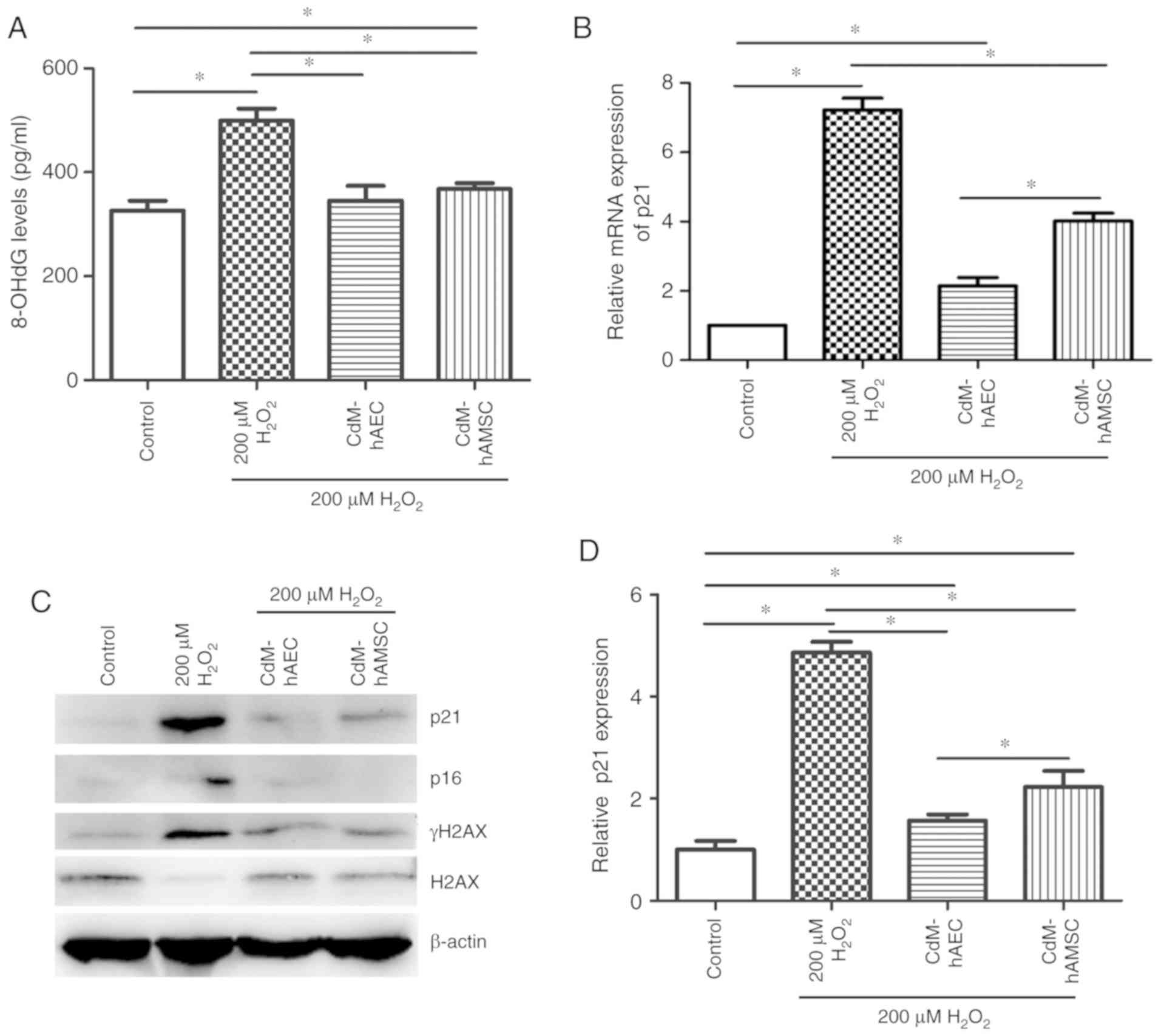|
1
|
Varani J: Fibroblast aging: Intrinsic and
extrinsic factors. Drug Discov Today Ther Strateg. 7:65–70. 2010.
View Article : Google Scholar
|
|
2
|
Makrantonaki E and Zouboulis CC: Molecular
mechanisms of skin aging: State of the art. Ann N Y Acad Sci.
1119:40–50. 2007. View Article : Google Scholar : PubMed/NCBI
|
|
3
|
Seo MY, Chung SY, Choi WK, Seo YK, Jung
SH, Park JM, Seo MJ, Park JK, Kim JW and Park CS: Anti-aging effect
of rice wine in cultured human fibroblasts and keratinocytes. J
Biosci Bioeng. 107:266–271. 2009. View Article : Google Scholar : PubMed/NCBI
|
|
4
|
Marcotte R and Wang E: Replicative
senescence revisited. J Gerontol A Biol Sci Med Sci. 57:B257–B269.
2002. View Article : Google Scholar : PubMed/NCBI
|
|
5
|
Serrano M and Blasco MA: Putting the
stress on senescence. Curr Opin Cell Biol. 13:748–753. 2001.
View Article : Google Scholar : PubMed/NCBI
|
|
6
|
Chen QM: Replicative senescence and
oxidant-induced premature senescence. Beyond the control of cell
cycle checkpoints. Ann N Y Acad Sci. 908:111–125. 2000. View Article : Google Scholar : PubMed/NCBI
|
|
7
|
Cheng H, Qiu L, Ma J, Zhang H, Cheng M, Li
W, Zhao X and Liu K: Replicative senescence of human bone marrow
and umbilical cord derived mesenchymal stem cells and their
differentiation to adipocytes and osteoblasts. Mol Biol Rep .
38:pp. 5161–5168. 2011, View Article : Google Scholar
|
|
8
|
Jiang B, Li Y, Liang P, Liu Y, Huang X,
Tong Z, Zhang P, Huang X, Liu Y and Liu Z: Nucleolin enhances the
proliferation and migration of heat-denatured human dermal
fibroblasts. Wound Repair Regen. 23:807–818. 2015. View Article : Google Scholar : PubMed/NCBI
|
|
9
|
Feng B, Fang Y and Wei SM: Effect and
mechanism of epigallocatechin-3-gallate (EGCG). Against the
hydrogen peroxide-induced oxidative damage in human dermal
fibroblasts. J Cosmet Sci. 64:35–44. 2013.PubMed/NCBI
|
|
10
|
Hernández-García D, Wood CD,
Castro-Obregón S and Covarrubias L: Reactive oxygen species: A
radical role in development? Free Radic Biol Med. 49:130–143. 2010.
View Article : Google Scholar : PubMed/NCBI
|
|
11
|
Halliwell B and Gutteridge JMC: Free
radicals in biology and medicine. J Free Radic Biol Med. 1:331–332.
2007. View Article : Google Scholar
|
|
12
|
Gutteridge JMC and Halliwell B:
Mini-review: Oxidative stress, redox stress or redox success?
Biochem Biophys Res Commun. 502:183–186. 2018. View Article : Google Scholar : PubMed/NCBI
|
|
13
|
Ames BN, Shigenaga MK and Hagen TM:
Oxidants, antioxidants, and the degenerative diseases of aging.
Proc Natl Acad Sci USA. 90:7915–7922. 1993. View Article : Google Scholar : PubMed/NCBI
|
|
14
|
Djamali A: Oxidative stress as a common
pathway to chronic tubulointerstitial injury in kidney allografts.
Am J Physiol Renal Physiol. 293:F445–F455. 2007. View Article : Google Scholar : PubMed/NCBI
|
|
15
|
Van Deursen JM: The role of senescent
cells in ageing. Nature. 509:439–446. 2014. View Article : Google Scholar : PubMed/NCBI
|
|
16
|
Harman D: The biologic clock: The
mitochondria. J Am Geriatr Soc. 20:145–147. 1972. View Article : Google Scholar : PubMed/NCBI
|
|
17
|
Díaz-Prado S, Muiños-López E,
Hermida-Gómez T, Rendal-Vázquez ME, Fuentes-Boquete I, de Toro FJ
and Blanco FJ: Multilineage differentiation potential of cells
isolated from the human amniotic membrane. J Cell Biochem.
111:846–857. 2010. View Article : Google Scholar : PubMed/NCBI
|
|
18
|
Castellanos G, Bernabé-García Á, Moraleda
JM and Nicolás FJ: Amniotic membrane application for the healing of
chronic wounds and ulcers. Placenta. 59:146–153. 2017. View Article : Google Scholar : PubMed/NCBI
|
|
19
|
Zhao B, Liu JQ, Zheng Z, Zhang J, Wang SY,
Han SC, Zhou Q, Guan H, Li C, Su LL and Hu DH: Human amniotic
epithelial stem cells promote wound healing by facilitating
migration and proliferation of keratinocytes via ERK, JNK and AKT
signaling pathways. Cell Tissue Res. 365:85–99. 2016. View Article : Google Scholar : PubMed/NCBI
|
|
20
|
Hahn HJ, Kim KB, An IS, Ahn KJ and Han HJ:
Protective effects of rosmarinic acid against hydrogen
peroxide-induced cellular senescence and the inflammatory response
in normal human dermal fibroblasts. Mol Med Rep. 16:9763–9769.
2017. View Article : Google Scholar : PubMed/NCBI
|
|
21
|
Abdul Hisam EE, Rofiee MS, Khalid AM,
Jalaluddin AF, Mohamad Yusof MI, Idris MH, Ramli S, James RJ, Jack
Yoeng W, Lay Kek T and Salleh MZ: Combined extract of Moringa
oleifera and Centella asiatica modulates oxidative stress and
senescence in hydrogen peroxide-induced human dermal fibroblasts.
Turk J Biol. 42:33–44. 2018. View Article : Google Scholar
|
|
22
|
Borodkina A, Shatrova A, Abushik P,
Nikolsky N and Burova E: Interaction between ROS dependent DNA
damage, mitochondria and p38MAPK underlies senescence of human
adult stem cells. Aging (Albany NY). 6:481–495. 2014. View Article : Google Scholar
|
|
23
|
Priya D, Selokar NL, Raja AK, Saini M,
Sahare AA, Nala N, Palta P, Chauhan MS, Manik RS and Singla SK:
Production of wild buffalo (Bubalus arnee) embryos by interspecies
somatic cell nuclear transfer using domestic buffalo (Bubalus
bubalis) oocytes. Reprod Domest Anim. 49:343–351. 2014. View Article : Google Scholar : PubMed/NCBI
|
|
24
|
Liu X, Wang Z, Wang R, Zhao F, Shi P,
Jiang Y and Pang X: Direct comparison of the potency of human
mesenchymal stem cells derived from amnion tissue, bone marrow and
adipose tissue at inducing dermal fibroblast responses to cutaneous
wounds. Int J Mol Med. 31:407–415. 2013. View Article : Google Scholar
|
|
25
|
Wang G, Zhao F, Yang D, Wang J, Qiu L and
Pang X: Human amniotic epithelial cells regulate osteoblast
differentiation through the secretion of TGFβ1 and microRNA-34a-5p.
Int J Mol Med. 41:791–799. 2018.
|
|
26
|
Flach J, Bakker ST, Mohrin M, Conroy PC,
Pietras EM, Reynaud D, Alvarez S, Diolaiti ME, Ugarte F, Forsberg
EC, et al: Replication stress is a potent driver of functional
decline in ageing haematopoietic stem cells. Nature. 512:198–202.
2014. View Article : Google Scholar : PubMed/NCBI
|
|
27
|
Sperka T, Wang J and Rudolph KL: DNA
damage checkpoints in stem cells, ageing and cancer. Nat Rev Mol
Cell Biol. 13:579–590. 2012. View Article : Google Scholar : PubMed/NCBI
|
|
28
|
Zhou L, Chen X, Liu T, Gong Y, Chen S, Pan
G, Cui W, Luo ZP, Pei M, Yang H and He F: Melatonin reverses
H2O2-induced premature senescence in
mesenchymal stem cells via the SIRT1-dependent pathway. J Pineal
Res. 59:190–205. 2015. View Article : Google Scholar : PubMed/NCBI
|
|
29
|
Díaz-Prado S, Muiños-López E,
Hermida-Gómez T, Rendal-Vázquez ME, Fuentes-Boquete I, de Toro FJ
and Blanco FJ: Multilineage differentiation potential of cells
isolated from the human amniotic membrane. J Cell Biochem.
111:846–857. 2010. View Article : Google Scholar : PubMed/NCBI
|
|
30
|
Kim EY, Lee KB and Kim MK: The potential
of mesenchymal stem cells derived from amniotic membrane and
amniotic fluid for neuronal regenerative therapy. BMB Rep.
47:135–140. 2014. View Article : Google Scholar : PubMed/NCBI
|
|
31
|
Zhang C, Yuchi H, Sun L, Zhou X and Lin J:
Human amnion-derived mesenchymal stem cells protect against UVA
irradiation-induced human dermal fibroblast senescence, in vitro.
Mol Med Rep. 16:2016–2022. 2017. View Article : Google Scholar : PubMed/NCBI
|
|
32
|
Kim WS, Park BS, Sung JH, Yang JM, Park
SB, Kwak SJ and Park JS: Wound healing effect of adipose-derived
stem cells: A critical role of secretory factors on human dermal
fibroblasts. J Dermatol Sci. 48:15–24. 2007. View Article : Google Scholar : PubMed/NCBI
|
|
33
|
Xiao H, Xiong L, Song X, Jin P, Chen L,
Chen X, Yao H, Wang Y and Wang L: Angelica sinensis polysaccharides
ameliorate stress-induced premature senescence of hematopoietic
cell via protecting bone marrow stromal cells from oxidative
injuries caused by 5-fluorouracil. Int J Mol Sci. 18:pp. pii
E22652017, View Article : Google Scholar
|
|
34
|
Faraci FM and Didion SP: Vascular
protection: Superoxide dismutase isoforms in the vessel wall.
Arterioscler Thromb Vasc Biol. 24:1367–1373. 2004. View Article : Google Scholar : PubMed/NCBI
|
|
35
|
Jin J, Lv X, Chen L, Zhang W, Li J, Wang
Q, Wang R, Lu X and Miao D: Bmi-1 plays a critical role in
protection from renal tubulointerstitial injury by maintaining
redox balance. Aging Cell. 13:797–809. 2014. View Article : Google Scholar : PubMed/NCBI
|
|
36
|
Park MJ and Bae YS: Fermented acanthopanax
koreanum root extract reduces UVB- and H2O2-induced senescence in
human skin fibroblast cells. J Microbiol Biotechnol. 26:1224–1233.
2016. View Article : Google Scholar : PubMed/NCBI
|
|
37
|
Choi SI, Lee JH, Kim JM, Jung TD, Cho BY,
Choi SH, Lee DW, Kim J, Kim JY and Lee OH: Ulmus macrocarpa hance
extracts attenuated H2O2 and UVB-Induced skin
photo-aging by activating antioxidant enzymes and inhibiting MAPK
pathways. Int J Mol Sci. 18:pp. pii E12002017
|
|
38
|
Lombard DB, Chua KF, Mostoslavsky R,
Franco S, Gostissa M and Alt FW: DNA repair, genome stability, and
aging. Cell. 120:497–512. 2005. View Article : Google Scholar : PubMed/NCBI
|
|
39
|
Kuilman T, Michaloglou C, Mooi WJ and
Peeper DS: The essence of senescence. Genes Dev. 24:2463–2479.
2010. View Article : Google Scholar : PubMed/NCBI
|
|
40
|
Boyette LB and Tuan RS: Adult stem cells
and diseases of aging. J Clin Med. 3:88–134. 2014. View Article : Google Scholar : PubMed/NCBI
|
|
41
|
Bockeria L, Bogin V, Bockeria O, Le T,
Alekyan B, Woods EJ, Brown AA, Ichim TE and Patel AN: Endometrial
regenerative cells for treatment of heart failure: A new stem cell
enters the clinic. J Transl Med. 11:562013. View Article : Google Scholar : PubMed/NCBI
|
|
42
|
Savickienė J, Baronaitė S, Zentelytė A,
Treigytė G and Navakauskienė R: Senescence-associated molecular and
epigenetic alterations in mesenchymal stem cell cultures from
amniotic fluid of normal and fetus-affected pregnancy. Stem Cells
Int. 2016.2019498:2016.
|
|
43
|
Kasai H and Nishimura S: Hydroxylation of
deoxyguanosine at the C-8 position by ascorbic acid and other
reducing agents. Nucleic Acids Res. 12:2137–2145. 1984. View Article : Google Scholar : PubMed/NCBI
|
|
44
|
Rodier F and Campisi J: Four faces of
cellular senescence. J Cell Biol. 192:547–556. 2011. View Article : Google Scholar : PubMed/NCBI
|
|
45
|
Mah LJ, El-Osta A and Karagiannis TC:
gammaH2AX: A sensitive molecular marker of DNA damage and repair.
Leukemia. 4:679–686. 2010. View Article : Google Scholar
|
|
46
|
Bhogal N, Jalali F and Bristow RG:
Microscopic imaging of DNA repair foci in irradiated normal
tissues. Int J Radiat Biol. 9:732–746. 2009. View Article : Google Scholar
|
|
47
|
Downs JA, Allard S, Jobin-Robitaille O,
Javaheri A, Auger A, Bouchard N, Kron SJ, Jackson SP and Côté J:
Binding of chromatin-modifying activities to phosphorylated histone
H2A at DNA damage sites. Mol Cell. 6:979–990. 2004. View Article : Google Scholar
|
|
48
|
Ikura T, Tashiro S, Kakino A, Shima H,
Jacob N, Amunugama R, Yoder K, Izumi S, Kuraoka I, Tanaka K, et al:
DNA damage-dependent acetylation and ubiquitination of H2AX
enhances chromatin dynamics. Mol Cell Biol. 20:7028–7040. 2007.
View Article : Google Scholar
|
|
49
|
Altaf M, Auger A, Covic M and Côté J:
Connection between histone H2A variants and chromatin remodeling
complexes. Biochem Cell Biol. 1:35–50. 2009. View Article : Google Scholar
|
|
50
|
Kusch T, Florens L, Macdonald WH, Swanson
SK, Glaser RL, Yates JR, Abmayr SM, Washburn MP and Workman JL:
Acetylation by Tip60 is required for selective histone variant
exchange at DNA lesions. Science. 306:2084–2087. 2004. View Article : Google Scholar : PubMed/NCBI
|
|
51
|
Xie C, Jin J, Lv X, Tao J, Wang R and Miao
D: Anti-aging effect of transplanted amniotic membrane mesenchymal
stem cells in a premature aging model of Bmi-1 deficiency. Sci Rep.
5:139752015. View Article : Google Scholar : PubMed/NCBI
|
|
52
|
Li F and Zhao SZ: Mesenchymal stem cells:
Potential role in corneal wound repair and transplantation. World J
Stem Cells. 6:296–304. 2014. View Article : Google Scholar : PubMed/NCBI
|
|
53
|
Xu Y, Guo S, Wei C, Li H, Chen L, Yin C
and Zhang C: The comparison of adipose stem cell and placental stem
cell in secretion characteristics and in facial antiaging. Stem
Cells Int. 2016.7315830:2016.
|















